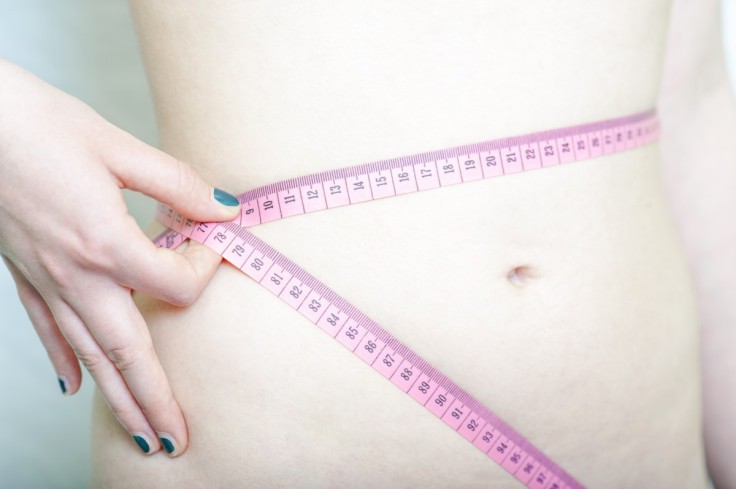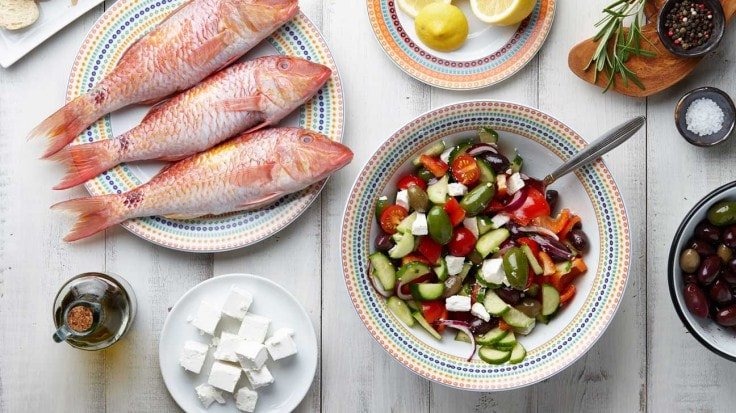Top 5 Realistic Weight Loss Programs That Actually Work

When we want to lose weight, cleanse our bodies, eat healthily for a while, or simply add a boost of nutrients to our life, we stumble upon plenty of fad diet plans and weight loss programs that promise miraculous benefits.
While we have plenty of resources to remain slim after we lost weight, many people choose the easy way out and engage in harmful weight loss programs.
Do we follow diets just because we want to lose weight? Certainly not!
Sometimes, we need to follow a diet plan to sustain a medical treatment or to alleviate the symptoms of an illness.
Other times we want to get in better shape and make sure we do not risk any health problems.
Nevertheless, how can we choose between diet plans that have merit in science and reality and how can we skip fakes?
Today, we will show you five weight loss programs that actually work.
5 Realistic Weight Loss Programs
These weight loss programs are tried and tested by scientists, regular people, and dieters. They all approve the methods of weight loss promoted by these 5 diets!
1. The Lazar Angelov Diet
The Lazar Angelov diet also comes together with an intense workout program that helps you build muscle and tone your body.
Regarding the diet, a famous former professional player and current fitness model propose a high protein and low carbohydrate meal plan for people who want to gain muscle mass and lose any shred of fat from their bodies.
The Lazar Angelov diet works well for people who are serious about body and muscle shaping.
Contrary to traditional weight loss programs based on the reduction of calories, Angelov’s plan is built with you in mind. It allows you to eat more (healthy foods, of course) and train even more intensely.
Instead of the traditional three meals a day, Angelov proposes six to seven meals a day, one every 2 to 3 hours, each meal amounting to some 35 grams of protein.
The idea behind this plan is that the regimen helps people gain muscle and progressively lose fat.
His diet plan also focuses on the consumption of water – three to four liters per day.
In this framework, water helps you burn fat, stay hydrated (especially because the workout is intense), and lose weight without affecting your muscle mass.
An example of Angelov’s daily meal plan is as follows:
- Breakfast: Oatmeal, eggs, peanut butter, grapefruit;
- Snack 1 (mid-morning): Chicken, broccoli, rice
- Lunch: Tuna pasta and avocado
- Snack 2 (post-workout): Chicken with rice
- Dinner: Lettuce with salmon
- Snack 3 (before sleep): cottage cheese, broccoli
The mix of omega 3 fatty acids, lean meat, vegetables, carbs, and fruits offers a good nutritional balance.
The workout comes as an addition to a lifestyle program that boosts people’s health and builds them amazing bodies.
Moreover, science agrees that high-protein diets mixed with high-intensity workouts help people lose weight (albeit the plan takes a lot of time). (1)
2. Green Smoothie Cleanse
Liquid diets have a bad reputation and for good reasons. Many help you temporarily lose a few pounds, leaving you starving and oftentimes without an ounce of energy.
They promise detox and cleansing, while they focus solely on fruit juices and blends that do not amount to a person’s daily dose of healthy calories or nutrients.
In a world full of “noise”, the 10-Day Green Smoothie Cleanse by JJ Smith stands out from the crowd as being more nutritious and healthy than juice cleanses or a water diet.
This diet plan includes smoothies and blended foods coming from all the important categories: vegetables and fruit, lean meats, grains, omega 3 fatty acids, and more.
The 10-day green smoothie cleanse plan requires you to consume three smoothies, snacks, and water/ tea for the entire ten days.
This is not a starving diet. On the contrary, the diet encourages you to eat some healthy snacks if you get hungry in between the smoothies.
Here are the main guidelines of the diet:
- Green smoothies contain arugula, beet greens, Bok Choy, carrot top leaves, chard/Swiss chard, collard greens, dandelion greens, kale, lettuce, parsley, radish tops, sorrel, spinach, spring greens, turnip greens, watercress, etc.
- For taste and a boost of vitamins, you should add low-sugar fruits, such as apples, grapefruits, lemons, limes, cherries, strawberries, cranberries, raspberries, goji berries, blueberries, and more.
- For protein, you should add avocado (also an excellent source of omega 3 fatty acids), nuts, and seeds, but also boiled rice, soy, unsweetened peanut butter, hard-boiled eggs, and more.
Besides helping you cleanse and lose weight, this particular diet is more versatile and useful than you imagine.
If you have mouth and dental problems and you cannot chew your food for a while, you can slurp your perfectly blended smoothies and purees until you are able to eat solid food again.
This is an excellent choice for people wearing power chain braces, people who recover from dental implants, wisdom tooth extractions, or oral surgery in general.
Moreover, the 10-day diet is a good option if you have gastrointestinal health issues, suffered surgery, or you are under certain medical treatments, or in case you do not support solid foods well.
3. The Piyo Diet And Workout Plan
The Piyo diet and workout plan come with a strong scientific background. (2)
The plan belongs to fitness legend Chalene Johnson, who understood one of the most stringent problems of today’s world when it comes to weight loss: not all calories are the same.
The Piyo diet is more accessible to people who want to lose weight because it focuses on lowering the number of calories we consume each day while encouraging us to follow a workout program mixing Yoga with Pilates.
The exercises are easy and fun to follow, coming with many health benefits from a physical and mental point of view. (3)
The Pyio diet comes with more than just one meal plan, proving once again that one size does not fit all.
First, you have to use a calculator (which comes with the program) to measure the number of calories you need every day for maintenance and health.
This caloric need is your basis and you need to lower it by about 600 calories a day.
The Piyo diet does not offer menus per se, but groups of foods that you need to eat to lose weight for eight weeks in a row.
These food groups are:
- Primary vegetables (dark greens and low-calorie vegetables);
- Secondary vegetables and grains;
- Fresh fruit;
- Lean meat protein; fish;
- Healthy fats (avocado, nuts, seeds, coconut, etc.);
- Free foods (scented herbs, seasonings, spices, unsweetened coffee or tea, etc.).
Depending on the number of calories you need daily, according to the calculations, you have full freedom to eat four or five times a day and introduce plenty of the foods in the categories above in your lifestyle.
If you mix the diet with the Pilates/Yoga workout, you will enjoy the benefits of body mobility, flexibility, muscle toning, skin health, and more.
4. The Mediterranean Diet
Scientists are very passionate about this diet and they studied it extensively.
Studies have shown that this diet is a solid, reliable, reality-based health plan that helps people lose weight, prevent cardiovascular disease, reduce the incidence of Type-2 diabetes, prevent strokes, and premature death. (4, 5, 6)
The Mediterranean Diet focuses on groups of foods you should eat more and groups of foods you should eat less or not at all.
In comparison to other weight loss programs, it insists less on calories count, but on the consumption of healthy calories, coming from high-quality foods.
Exercise is important as well, although the diet does not come with its own workout plan.
Here are the basic general guidelines on how to make a serious and life-long lifestyle change and embrace the Mediterranean diet as a way of life:
- Eat more: Leafy greens, all vegetables, fruits, nuts, seeds, legumes, potatoes, whole grains, bread, herbs, spices, fish, seafood, and extra virgin olive oil, olives, avocados, and avocado oil;
- Eat in moderation: Poultry, eggs, dairy; red wine; unsweetened coffee and tea;
- Eat less: Red meat;
- Do not eat at all: Soda, candies, ice cream, table sugar, white bread, pasta made with refined wheat, margarine and other sources of trans-fats, soybean oil, canola oil, cottonseed oil, processed foods, fast food, snacks, anything that says “low fat”, “low sugar”, or “diet”, anything that seems to come from an industrial plant.
The diet includes snacks as well, even if advocates of the lifestyle say you do not need more than three meals a day.
The snacks, if you must have them, include a handful of nuts or seeds, fruit, Greek yogurt, raw carrots or other veggies, berries or dry fruits, olives, and almond butter.
5. The Paleo Diet
Controversial and under scrutiny even today, the Paleo diet comes with its fair share of scientific merit.
The main idea behind this diet is that our hunter-gatherer ancestors did not have to deal with obesity, heart disease, and diabetes, because they did not eat processed foods.
You need to remember that some of our ancestors lived on a low-carb diet high in animal foods, others on a high-carb diet with lots of plants.
The common trait is that our ancestors did not consume unearthly amounts of sugars and processed foods full of preservatives and chemicals.
As long as you understand that you should not become a fanatic regarding this diet and that you should still keep your calories in check (use the Piyo calculator and principles), everything makes sense.
The Paleo diet comes with similar (if not more) benefits as the Mediterranean diet, helping you lose weight and protect your heart. (7)
Here are the major guidelines of the Paleo diet you should consider if you want to make some lifestyle changes:
- Eat more: Lean meat, fish, eggs, vegetables, fruits, nuts, tubers, seeds, herbs, spices, healthy fats, and oils;
- Eat in moderation: dairy, legumes, and grains;
- Do not eat at all: sugar, high fructose corn syrup, artificial sweeteners, trans fats, vegetable oils (except for olive and avocado oil), and highly processed foods (everything that comes from factories and plants).
The Paleo diet teaches you to read food labels carefully and focus on natural organic products.
If you want to take the best of all these weight loss programs, this is what you should take:
- Make sure you get the best quality calories in healthy foods;
- Count the calories depending on your basic caloric count and needs;
- Mix in some physical exercise;
- Give up sugar and processed foods.
These first steps will take you closer to your weight loss and health gain goals.





If you go for paleo diet, you don’t have to eat dairy, legumes, potatoes and grains.